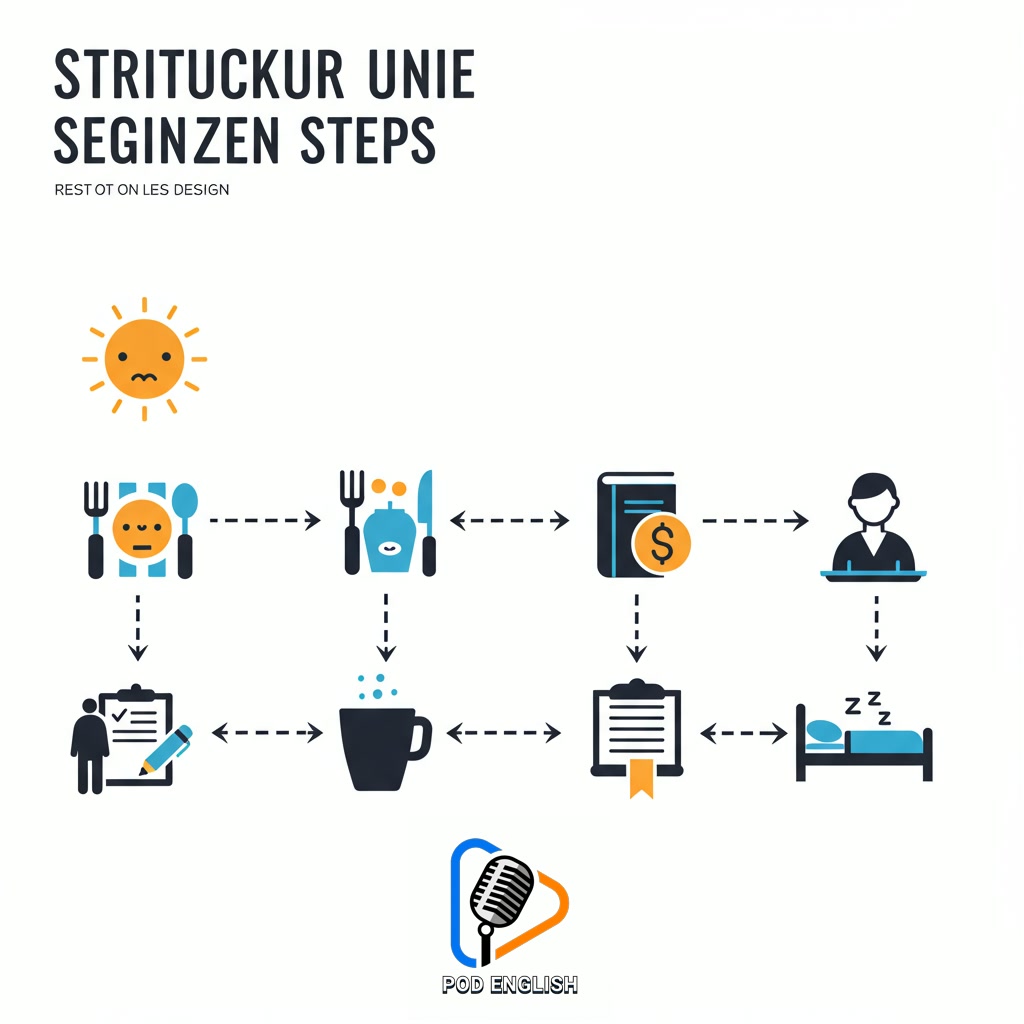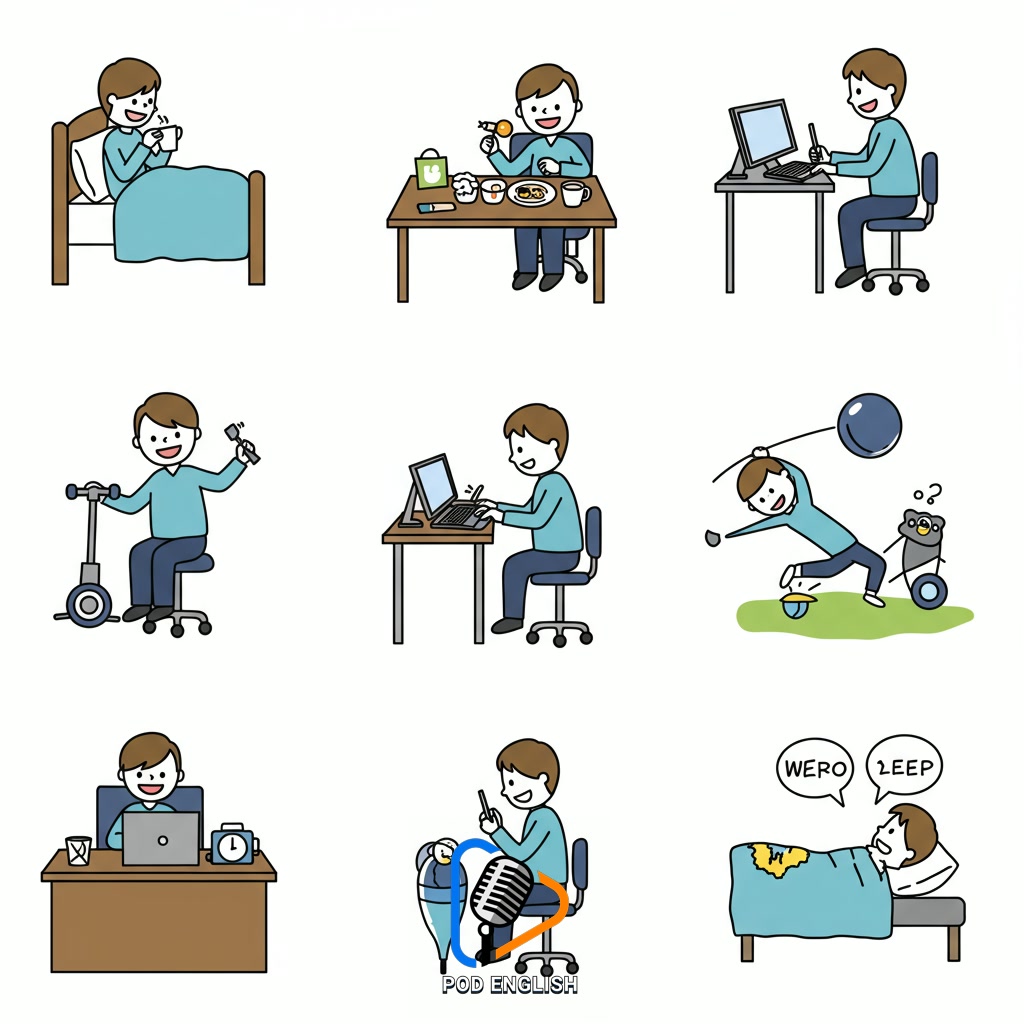Learn English
Learn English: Practice Describing Your Daily Routine and Activities

This content is designed to help English learners practice describing their typical daily activities and routines. It provides an opportunity to use relevant vocabulary and grammar structures needed to talk about everyday life. Focusing on this familiar topic is an effective way to build confidence and fluency in conversational English. Mastering descriptions of your day is a practical step in improving communication skills.
Table of Contents
- Section 1: Introduction: Why Describe Your Daily Routine?
- Section 2: Essential Vocabulary for Daily Activities
- Section 3: Key Grammar: Using the Simple Present Tense
- Section 4: Putting It Together: Structuring Your Description
- Section 5: Practice Exercises: Describe Your Day
- Section 6: Tips for Expanding and Improving Your Description
Section 1: Introduction: Why Describe Your Daily Routine?
Welcome to this practice material! We’re focusing on a very common and useful topic: your daily routine. Why is describing your day important when learning English? First, it’s a topic you know very well, which makes it easier to start speaking. You use simple, everyday vocabulary for activities like waking up, eating, working, or studying. Talking about your routine helps you practice essential grammar, especially the simple present tense, which is used for habits and routines. It also gives you a chance to use time expressions (like ‘in the morning,’ ‘at 7 o’clock,’ ‘after that’). Being able to talk about your day is a fundamental skill for everyday conversation and helps build confidence in using English naturally.

Introduction: Why Describe Your Daily Routine?
Section 2: Essential Vocabulary for Daily Activities
To effectively talk about your daily routine, you need the right words. This section introduces essential vocabulary related to common actions and things you encounter throughout your day, from the moment you wake up until you go to sleep. We’ll cover verbs like ‘get up,’ ‘brush your teeth,’ ‘have breakfast,’ ‘go to work/school,’ ‘eat lunch,’ ‘do homework,’ ‘make dinner,’ ‘watch TV,’ and ‘go to bed.’ You’ll also learn useful nouns for items like ‘alarm clock,’ ‘coffee maker,’ ‘computer,’ and ‘toothbrush.’ Mastering these words is the first step to confidently describing your own day and understanding others when they talk about theirs. Pay close attention to these words and try to use them as you practice talking about your routine.

Essential Vocabulary for Daily Activities
Section 3: Key Grammar: Using the Simple Present Tense
Okay, you have the words for daily activities. Now, how do you talk about them happening regularly? For your daily routine, you use the **Simple Present Tense**. This tense is perfect for actions that happen every day, every week, or are just generally true. It shows habits and routines. The basic form is the base verb (like *wake, eat, go*). However, for ‘he’, ‘she’, and ‘it’, you usually add ‘-s’ or ‘-es’ to the verb (like *wakes, eats, goes*). For example, “I wake up at 6 AM every day,” but “She wakes up at 7 AM.” You use this tense to describe your typical morning, afternoon, and evening. Understanding the Simple Present is key to sharing your daily life in English.

Key Grammar: Using the Simple Present Tense
Section 4: Putting It Together: Structuring Your Description
Now that you know how to use the Simple Present tense to talk about regular actions, let’s focus on putting those actions together to describe your whole day. A good way to structure your description is to follow the order of events throughout your morning, afternoon, and evening. Use transition words and phrases to connect your sentences smoothly. Simple words like ‘First,’ ‘Then,’ ‘After that,’ ‘Next,’ and ‘Finally’ help show the sequence of your activities. You can also use conjunctions like ‘and’ or ‘but’ to combine related ideas. For example, you could say, “First, I wake up, and then I brush my teeth.” Organizing your routine in this step-by-step way makes it clear and easy for others to understand.

Putting It Together: Structuring Your Description
Section 5: Practice Exercises: Describe Your Day
Now it’s time to put your knowledge into practice! This section provides structured exercises to help you describe your personal daily routine. Think about what you typically do from the moment you wake up until you go to bed. Use the Simple Present tense and the vocabulary you’ve learned. You can start by listing your main activities in order. Then, try writing sentences to connect them, using time expressions like ‘first,’ ‘then,’ ‘after that,’ ‘in the afternoon,’ ‘in the evening,’ and ‘finally.’ Practicing describing your day aloud is also very helpful for improving your fluency and confidence. Don’t worry about making mistakes; the goal is to communicate your daily activities clearly. Let’s start practicing!

Practice Exercises: Describe Your Day
Section 6: Tips for Expanding and Improving Your Description
Okay, you’ve practiced describing the basic steps of your day. Now, let’s make your descriptions even better! To expand and improve, try adding more detail. Instead of just saying “I eat breakfast,” you could say “I quickly eat a simple breakfast of toast and coffee.” Use adverbs to describe *how* you do things (quickly, carefully, happily) and adjectives to describe *what* things are like (delicious coffee, busy morning). Connect your sentences using linking words like “then,” “after that,” “finally,” or “because.” Explain *why* you do certain things – “I go to the gym *because* I want to stay healthy.” Don’t be afraid to include your feelings or opinions. Practice saying your description out loud to hear how it flows. These small additions will make your description much more interesting and natural.

Tips for Expanding and Improving Your Description













